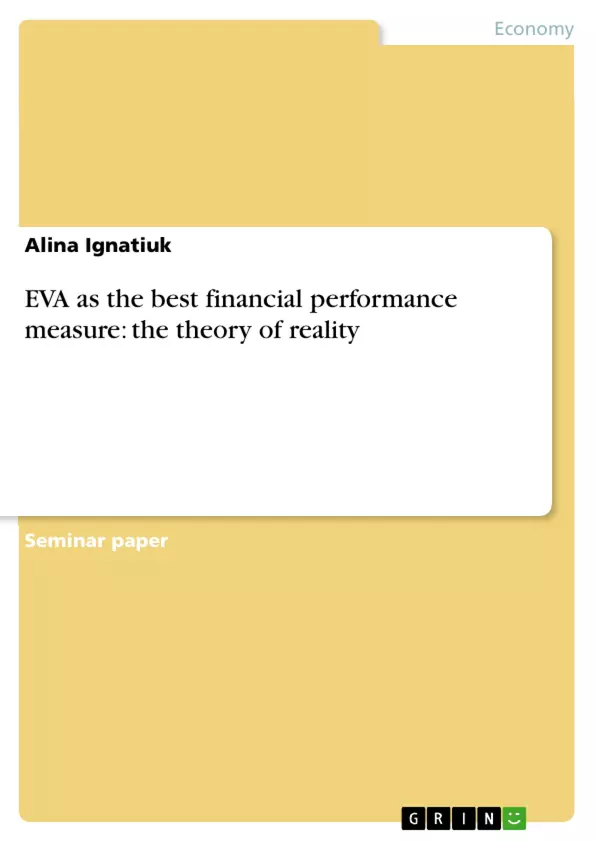In this paper these issues will be discussed:
•the main purpose and functions of the financial performance management and how it is related to the problem of shareholders value creation, company growth and managers decision making process and management motivation;
•the appropriate measures of management performance from the shareholders point of view;
•contradictions or goal incongruence between shareholders, management and company long-term growth.
Table of Contents
- I. Introduction
- II. The Main Functions of the Financial Performance Management
- III. From ROI to Value-based Management
- IV. EVA as the Best Management Performance Measure
Objectives and Key Themes
This paper aims to analyze the effectiveness of Economic Value Added (EVA) as a financial performance measure, considering its strengths and limitations in relation to shareholder value creation, managerial decision-making, and long-term company growth. It explores the evolution of performance measurement from traditional methods like ROI to value-based approaches.
- The functions of financial performance management and its relationship to shareholder value.
- A comparison of traditional (ROI) and value-based (EVA, Added Value) performance measures.
- The effectiveness of EVA as a management performance measure and its potential drawbacks.
- Goal congruence (or incongruence) between shareholders, management, and long-term company growth.
- Alternative perspectives on shareholder wealth creation and their implications for performance measurement.
Chapter Summaries
I. Introduction: This chapter introduces the importance of financial performance measures in evaluating firm performance and achieving growth. It highlights the conflict of interest between managers and shareholders and the role of performance measures in aligning these interests. The chapter then introduces EVA as a popular, yet controversial, performance measure.
II. The Main Functions of the Financial Performance Management: This section details the three main functions of financial performance management: setting objectives aligned with shareholder needs (return on capital), providing information for financial management (planning, control, investment decisions), and motivating and controlling managers. It discusses the debate between return on investment (ROI) and value-based measures.
III. From ROI to Value-based Management: This chapter compares ROI and value-based measures like Added Value and EVA. It examines the advantages and disadvantages of ROI, emphasizing its limitations in aligning managerial incentives with shareholder interests. The chapter introduces Added Value and its calculation, highlighting its strengths and weaknesses. Finally, it introduces EVA as a more sophisticated value-based measure.
IV. EVA as the best management performance measure: This chapter delves into EVA as a performance measure, exploring its theoretical underpinnings and practical applications. It discusses potential limitations such as the complexity of calculation and the potential for manipulation. Alternative approaches, like REVA, and the issue of goal congruence are also addressed.
Keywords
Economic Value Added (EVA), Return on Investment (ROI), Added Value, shareholder value creation, management performance measurement, financial performance management, goal congruence, managerial incentives, value-based management, REVA, shareholder wealth.
- Quote paper
- Alina Ignatiuk (Author), 2008, EVA as the best financial performance measure: the theory of reality, Munich, GRIN Verlag, https://www.grin.com/document/124462



